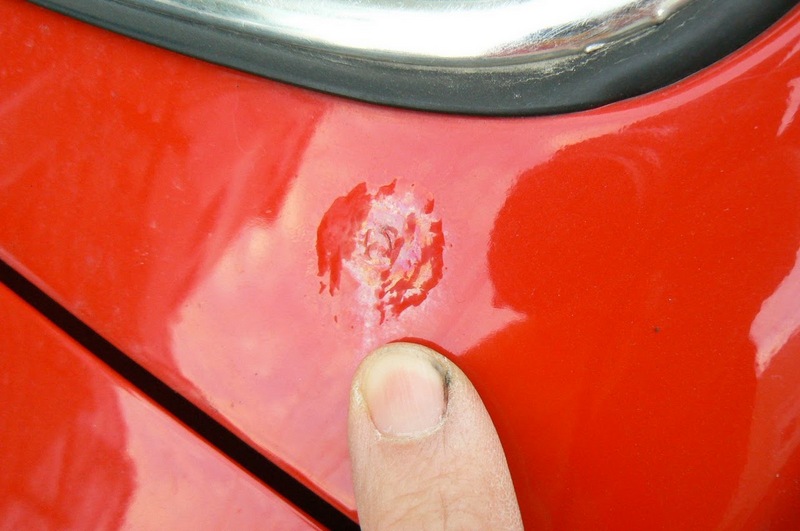If you take a closer look at your car after winter, you might find patches of rust. The car pain usually gets damaged in the cold and damp seasons. Deposits from road salt are the least of the problems. Here we explain how to remove rust from your car.
Where does rust come from?
If you notice rusty brown spots on your car, there is no reason to panic. It is usually the harmless little rust film. In contrast to the real rust, film rust is more of a superficial coating that has not yet properly eaten into the paint and metal of the car. Real rust sits deeper and corrodes the body. It causes the paint to literally burst into bubbles and flake off. The metal becomes porous because the rust eats into it.
Rust, or rust film, always occurs when moisture is involved. It is more prevalent in humid climates, e.g., by the sea, as well as in autumn and winter. The moisture penetrates the paint, which may have already been damaged by winter road salt or gravel, and forms a compound with oxygen and the metal. The metal oxidizes, and hydrous iron oxide is formed with the typical orange-red color.
Fenders, doors and door handles, tank caps, entrances, and the trunk are particularly susceptible to rust film.
Remove the rust film from the car
To prevent it from causing any major damage, the rust film must be removed immediately. Simply apply a little car polish or paint cleaner to a soft cloth and gently wipe away the rusty brown coating.
You can also remove stubborn or large-scale rust using cleaning clay or a special rust remover, which is applied to a soft cloth or polishing cotton. By carefully dabbing at specific points, scratches caused by rubbing too hard can be avoided.
Removing it with cleaning clay requires a lot of skill because the clay can also absorb harder particles, which can then leave scratches in the paint if the pressure is too high. If the rust has settled on unpainted areas of the car, you can carefully sand it off with a ball of aluminum foil.
The most important measure is to remove the rust film immediately. Inspect the car for other affected areas. Apply car polish or paint cleaner to cotton or a soft cloth and wipe off any rust.
Home remedies for rust film on the car
If you don’t have any car polish, cleaning clay, or rust remover on hand and don’t want to spend any money on them, here is what we recommend. Get some Coca-Cola, lemon, oil, and vinegar from your kitchen cupboard. Then try these home remedies first!
Coca-Cola contains phosphoric acid, and it combats rust film by converting the iron oxide into iron phosphate. Soak a ball of aluminum foil (this is supposed to ensure better ion exchange) with cola and gently rotate it on the area affected by the rust film.
Some car owners prefer lemon juice to a phosphate-containing soft drink. Here, you proceed in the same way as with Coca-Cola. With vinegar and oil, you can prepare a delicious salad dressing or even remove rust. Wipe vinegar gently with a semi soft pad, and then wipe with a drop of oil on a soft cloth. Citric and tartaric acid can also remove rust film, although both products are less common in the house.
The soft drink Coca-Cola, which contains phosphate acid, is very suitable as a rust remover. Rust can also be effectively dealt with using other home remedies such as lemon, vinegar, and oil.
Conclusion
- Rust film does not damage the paintwork and metal parts of the car if it is removed early enough and regularly. This requires simple, commercially available products, or you can use rust removers that are available in the household, such as Coca-Cola, lemon, and the like.
- Rust and rust infestation can be prevented with a hot wax treatment and underbody protection at the beginning of the damp and cold season. This protects the car against the effects of the weather and scratches and also gives it a really nice shine.
- If rust film proves to be very stubborn and cannot be easily removed, we recommend a trip to the car repair shop to prevent long-term damage to the paint and car parts.
